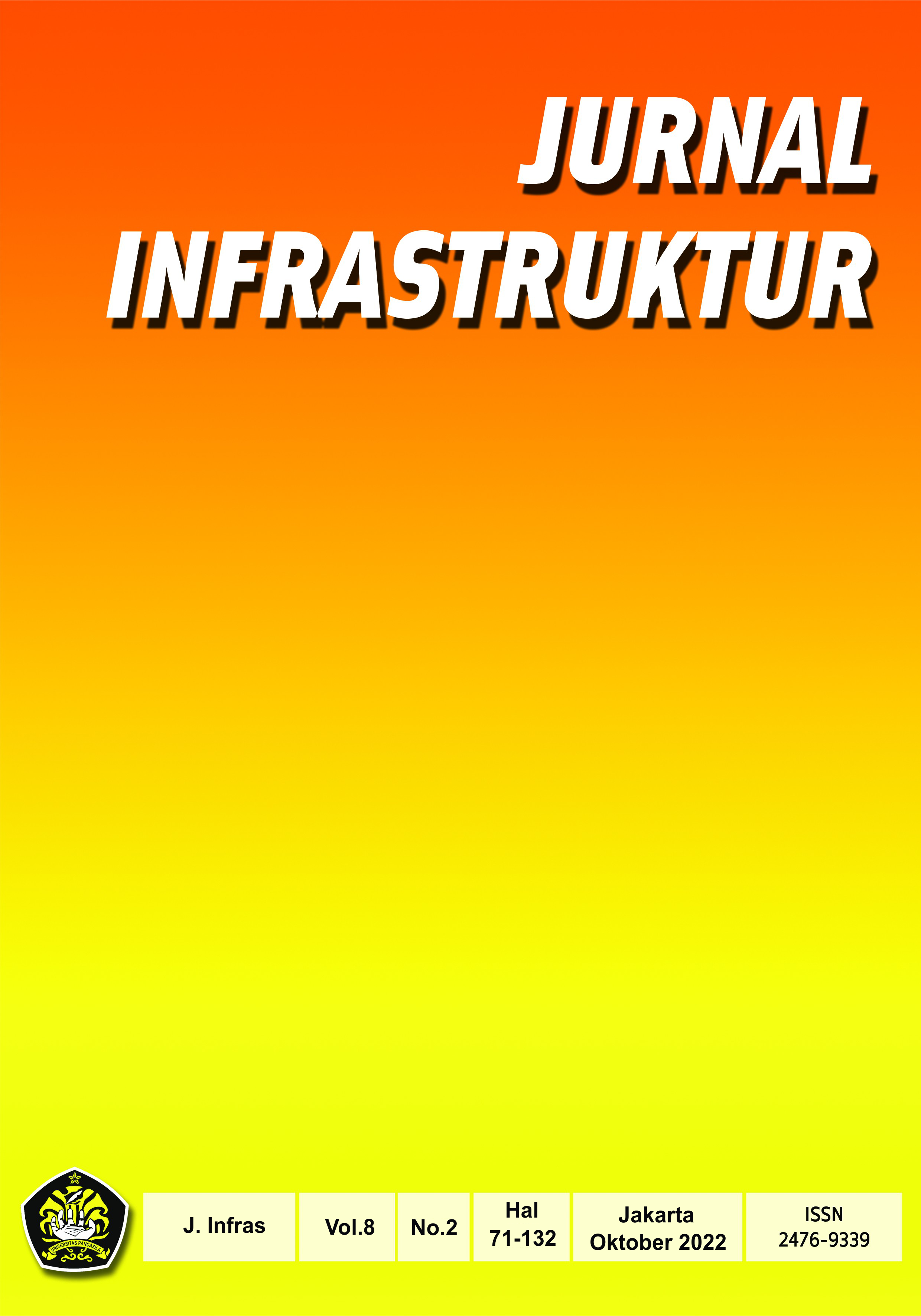EFFECT OF USING DIFFERENT TYPES OF ADDITIVES AGAINST THE COMPRESSIVE STRENGTH OF CEMENT PASTE
Abstract views: 258 | pdf downloads: 234
Abstract
Cement as the main construction material is used for concrete, mortar and cement paste. Some problems with the use of cement are caused by shrinkage, cracking, so that these problems can reduce the compressive strength. This study analyzed the use of additives in overcome the weakness of cement paste. There are three types of additives used, namely, Intraplast Z, Cebex 100 and J-Additive. The percentages of additive use are 0.36%, 0.48%, 0.6% and 0.72% by weight of cement. The test object is a cube measuring 50 x 50 x 50 mm. The compressive strength test on cement paste was carried out at the age of 3, 7, 14 and 28 days. The results showed that for Intraplast Z and Cebex 100 the optimum percentage was 0.36% which resulted in an increase in compressive strength of 18% and 28%, respectively. As for the J-additive, there was an increase of 50% at a percentage of 0.36%. The benefits of the research resulted in the optimal percentage so that the use of additives became more efficient.
References
Yang Z, Gao Y, Mu S, et al. (2019). Improving the chloride binding capacity of cement paste by adding nano-Al2O3. Constr Build Mater;195:415–422.
Hou P, Cai Y, Cheng X, et al. (2017) Effects of the hydration reactivity of ultrafine magnesium oxide on cementbased materials. Mag Concrete Res.69(22): 1135–1145.
Zhao, Ht., Li, Xl., Xie, Ds. et al. (2022). Influence of CaO-based expansive agent, superabsorbent polymers and curing temperature on pore structure evolution of early-age cement paste. J. Cent. South Univ. 29, 1663–1673. https://doi.org/10.1007/s11771-022-4957-1
Kim JK. (2001) Thermal analysis of hydration heat in concrete structures with pipe-cooling system. Comput Struct 79(2):163–171
Asadollahfardi G, Katebi A, Taherian P, Panahandeh A. (2019). Environmental life cycle assessment of concrete with different mixed designs. Int J Constr Manag. DOI: 10.1080/15623599.2019.1579015
Corinaldesi V, Nardinocchi A, Donnini J. (2015) The influence of expansive agent on the performance of fibre reinforced cement-based composites. Constr Build Mater 91:171–179
Liguo Wang, Siyi Ju, Lanxin Wang, Fengjuan Wang, Shiyu Sui, Zhiqiang Yang, Zhiyong Liu, Hongyan Chu & Jinyang Jiang. (2022): Effect of citric acid-modified chitosan on the hydration and microstructure of Portland cement paste, Journal of Sustainable Cement-Based Materials, DOI: 10.1080/21650373.2021.2016515
R. Palod, S.V. Deo, G.D. (2020)Ramtekkar, Materials Today : Proceedings Effect on mechanical performance, early age shrinkage and electrical resistivity of ternary blended concrete containing blast furnace slag and steel slag, Mater. Today Proc. 32: 917–922, https://doi.org/10.1016/j.matpr.2020.04.747.
X. Han, J. Feng, Y. Shao, R. Hong. (2020). Influence of a steel slag powder-ground fl y ash composite supplementary cementitious material on the chloride and sulphate resistance of mass concrete, Powder Technol. 370: 176–183, https://doi.org/10.1016/j.powtec.2020.05.015.
W. Xuequan, Z. Hong, H. Xinkai, L. Husen. (1999) Study on steel slag and fly ash composite Portland cement, 29;1103–1106.
I. Galan, A. Baldermann, W. Kusterle, M. Dietzel, F. Mittermayr. (2019). Durability of shotcrete for underground support-review and update, Constr. Build. Mater. 202; 465–493
ASTM C109/C109M – 20b. Standard Test Method For Compressive Strength Of Hydraulic Cement Mortars (Using 2-In. Or [50mm] Cube Specimens)
ASTM C192/C192M – 19. Standard practice for making and curing concrete test specimens in the laboratory
Y. Renhe & H. Tingshu. (2021). Influence of liquid accelerators combined with mineral admixtures on early hydration of cement pastes. Constr Build Mater.
Copyright (c) 2022 Jurnal Infrastruktur

This work is licensed under a Creative Commons Attribution-NonCommercial-ShareAlike 4.0 International License.














